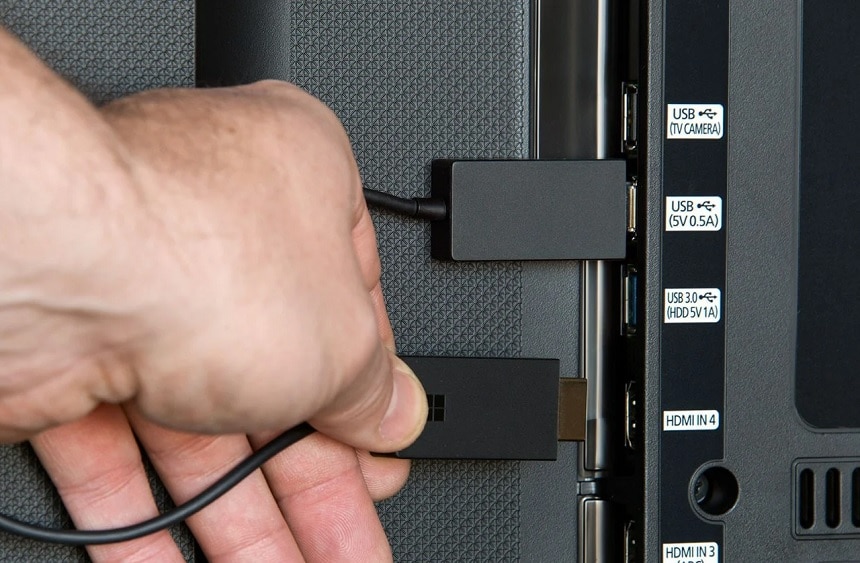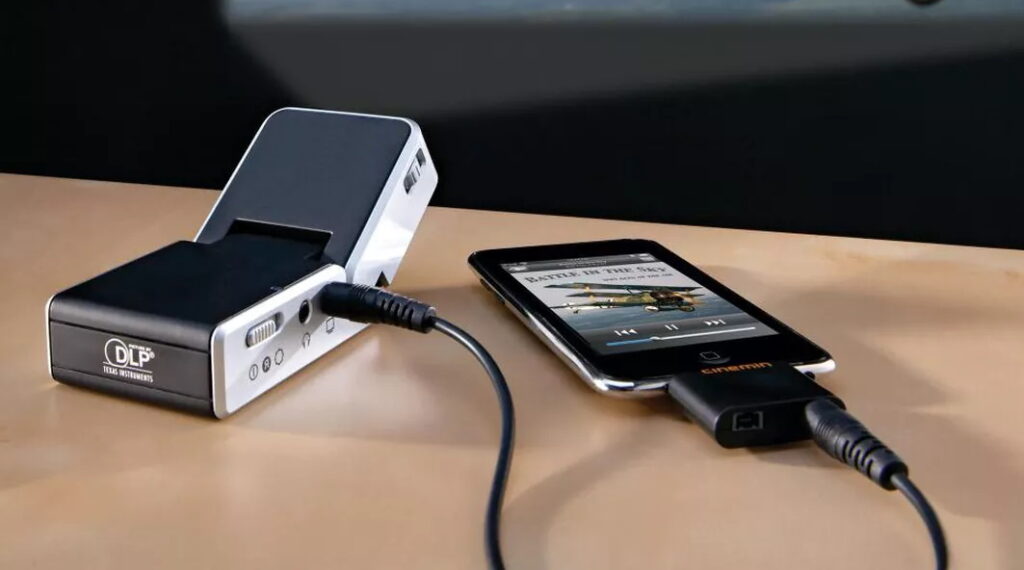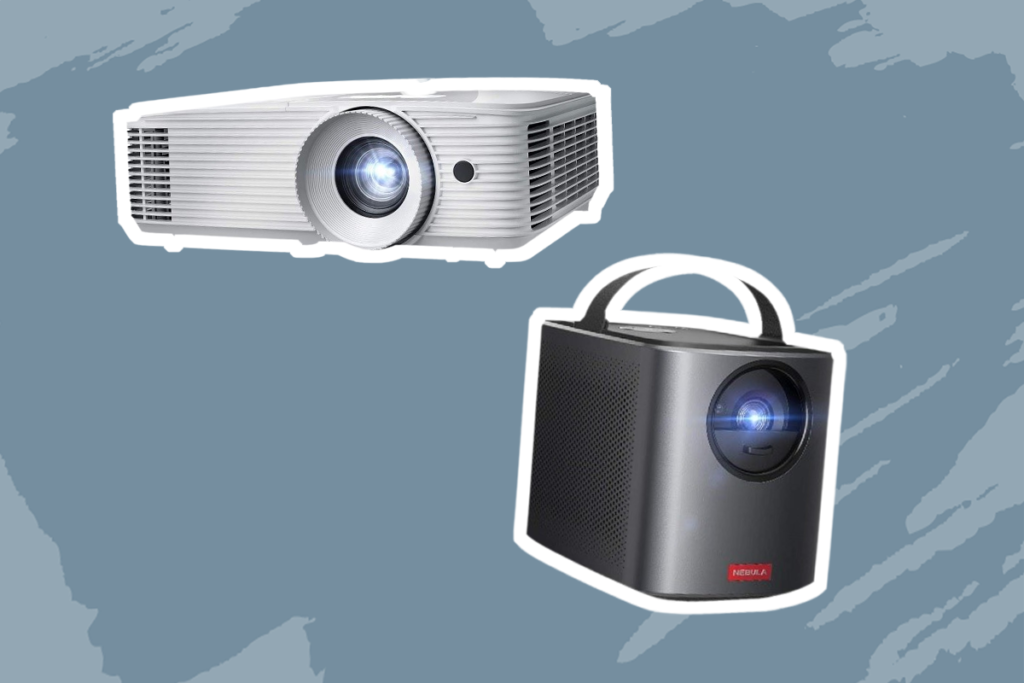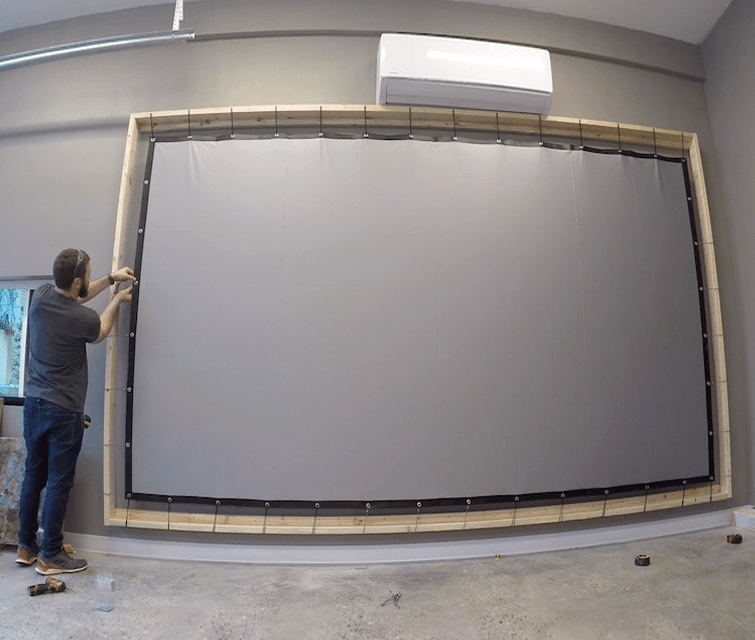When it comes to creating a viewing space in your home or workplace, you are spoilt for choice. Small-scale projectors are increasingly becoming a thing with so many people in love with the idea of turning a blank wall in their home into a home theatre. The main challenge, normally, is choosing the right audio setup that can offer a true cinematic experience. You want sound to naturally sync with the projected moving pictures for you to enjoy your movie night or presentation.
You need Bluetooth speakers to project sound. Connecting speakers to a projector can be one hell of a hassle, especially if your projector doesn’t have built-in Bluetooth accessibility. If that’s the case, you will need a Bluetooth adapter or an audio cable. If you can’t get any of these, then you have the option of using the sound from your PC, phone or Tablet directly which you won’t find impressive after learning how to connect a speaker to a projector.
There are multiple brands and models of video projectors on the market currently, but very few have high-quality speakers that make them suitable for audio accompaniment of a thrilling movie or presentation at work.
The few models with top-notch quality speakers are usually on the high end price-wise. According to most reviews, one of the most popular projectors with high-quality built-in speakers is the BenQ.
If you cannot afford to get a projector with built-in speakers, you can invest in good Bluetooth speakers, then connect them to your projector for the best sound quality. The Bose SoundLink Color Bluetooth Speaker II comes highly recommended by most users because it is reasonably priced, has Bluetooth accessibility and it packs bold sound in its highly portable build.
The bottom line is, you can connect external speakers to your projector, and they offer better sound quality. Plus, you can place them anywhere in case you have a big audience.
This is the most straightforward way of connecting speakers to your projector. Most stereo speakers work with one audio port. Some are normally linked together, while some have separate right and left audio connectors. For the speakers with individual audio connectors, you will have to split the coaxial cable or audio jack between them.
All you need to connect your stereo speakers to a projector successfully is a 3.5mm TOSLINK or a composite audio cable. Take one end of the audio cable and connect it to the audio output of the projector and the other end to the speakers.
If the device you are using as your source of media doesn’t have built-in speakers, then connecting to stereo speakers is mandatory. Let’s say you are using the Amazon Fire TV Stick instead of an HDTV that has a cable box or a laptop with its own speakers; you just must connect to stereo speakers for some sound projection.
You must be wondering whether you can or should connect your soundbar to a projector. Well, as long as your soundbar and projector have compatible ports, you can actually connect them together. The only downside to this option is that you will get lower quality sound than the traditional surround system.
You can connect your soundbar to your project via HDMI or HDMI arc, wirelessly, digital optical, and analog connections. Most modern soundbars support all these formats that allow audio transmission to them when connected to a projector.
HDMI is one of the top options for connecting audiovisual devices. This is because the cables are able to transmit advanced digital formats. When you are using your projector as the source, hooking it to a soundbar is such a breeze. All you need to do is switch both devices off, then take one end of the HDMI cable and plug it into the HDMI port on your projector, then plug the other end onto the HDMI port on your soundbar. Turn both the devices on then check that they are set to the HDMI channels you connected them to.
If you are using an external source of media like a laptop, TV or DVD, then thins might a bit complicated. Your projector must have both an HDMI port and an audiovisual input that is compatible with that of your laptop, TV or phone. The first thing to do is switch off all the devices then use a compatible cable to connect the input channel of your soundbar to the output channel of your external source of media. Next, use a HDMI cable to connect your soundbar with your projector. Turn on all the devices.

Analog connection involves more cables, but it is much easier than digital connection. The most common analog connections are the RCA and AUX.
RCA connections are usually tedious because they involve a couple of cables. However, they are very simple. All you have to do is ensure you connect RCA ports with similar colors.
AUX connection is equally intuitive. You just need to connect the aux output on your projector with the aux input on your soundbar.
Very few projectors, support the digital optical audiovisual format. Mostly it’s the portable models that have the compatibility. All you have to do to complete a digital optical connection when using the projector as your source is;-
Turn all the devices off, connect one end of the digital optical cable to the soundbar and the other end to your projector. Turn the devices on and connect the projector to the digital optical channel.
If you are using an external source of media, then your projector must have a digital optical in and your soundbar a digital optical out. You can then use a digital optical cable to connect the devices, just ensure you have the soundbar in the middle.
This is one of the simplest options as long as both your soundbar and projector are Bluetooth enabled. All you have got to do is turn on both devices, then set each of them to pair. You can refer to your user manuals. After turning on Bluetooth on your projector, find your soundbar among the devices displayed on it, tap on it then wait for it to pair.
Connecting a whole home theatre system to a projector is a bit more complicated than connecting stereo speaker or a single soundbar for mono sound. You need to use AVR or any other similar option like Matrix switches, a switch or a splitter to reroute the audio and video signals to the correct channels.
A Splitter is meant to split the connection of one media source device into two display devices. If the media source device is HDMI, it will split it into one audio device and one display device. With a switch, you can increase the number of media source devices that you can connect to a projector. A matrix switch is a combination of a splitter and a switch. It is mainly used in complex home entertainment options.
An AVR is like an audio matrix switch because it can split the video signal to the video devices and the sound signal to the entire sound system of a home theatre.
So, to connect your projector to the home theater sound system; Use an HDMI cable to connect your DVD or media source to the projector for video broadcasting. Next, use another HDMI cable to connect the media source to the AVR then connect the AVR to the external speakers using speaker cables.
The most important thing in a projector to wireless speakers connection is Bluetooth capability. Therefore, before you learn how to connect your Bose Bluetooth speakers to a projector, ensure your projector has Bluetooth accessibility. How do you check for that? Most Bluetooth devices usually have the Bluetooth icon Trusted Source Bluetooth - Wikipedia Bluetooth is a short-range wireless technology standard that is used for exchanging data between fixed and mobile devices over short distances using UHF radio waves in the ISM bands, from 2.402 GHz to 2.48 GHz, and building personal area networks (PANs). en.wikipedia.org on them. If you can’t find it on your projector, you can check the manufacturer’s website or your models Amazon page for more information.
If the projector has Bluetooth capability, then connecting speakers to it is very straightforward. The process is pretty much similar to other Bluetooth processes like connecting your phone to a Bluetooth speaker. The first thing you need to do is find out how to access the Bluetooth settings on your projector. Your user manual can come in handy.
Most projectors have a Bluetooth button that you can press to get connectivity options. the connectivity options will pop up on the screen then you will locate your wireless speakers and tap to pair. Pairing takes some time, so you have to be patient.
Alternatively, you can connect your Bluetooth speakers to your projector with Bluetooth capability using an app. Some projector brands like Nebula Trusted Source Nebula | Smart Projectors. Catch the Biggest Savings of 2021. Make home theater magic anywhere in 2021 with an Anker Nebula projector. We offer the best, most portable smart projectors with stunning 4K visuals. us.seenebula.com have an app that allows you to control your projector remotely.
This is a bit complex because your projector is not equipped for wireless connection. Some projectors don’t even feature the right receptors to connect wirelessly. However, with the right tools, you can work your way around your projector or get an adapter.
First, you need to establish the tools you’ll be using to connect your Bluetooth speaker to your non-Bluetooth projector. The tools you’ll use depend on what you want to use the projector for and if you’ll be using it with a Bluetooth capable device or not. Here is how to connect your miroir pico projector to a Bluetooth speaker;-
If your media source is Bluetooth enabled, you can bypass the tedious process of transforming your projector into a Bluetooth-capable device. You will need to connect your Bluetooth-friendly media source, a laptop or TV with your wireless speakers.
So, first, you have to find the Bluetooth settings on the media source device then turn Bluetooth on. The process is even much easier than connecting a speaker to a projector directly. Next, turn the speaker on, find the Bluetooth settings on it and engage the pairing function. The speaker will send out a signal to the media source device to pair.
Your speaker’s model name will pop up the screen of the media source device. Select the pair option next to its name, and the two devices will be connected.
If your media source device doesn’t have Bluetooth capability, probably an older model of a computer, TV or DVD, you must have another piece of equipment that will work as a middleman between your wireless speakers and the Non-Bluetooth media source device.
You must be wondering if and how the connection is even possible. Well, it is. Most old computer, TV or DVD models have headphone jacks which make the connection a possibility. You need a male to male 3.5mm audio cable which you are highly likely to be having already if you own electronic devices like a TV, headphones or computers. If you don’t have it, you can easily buy one from a tech store.
The cable allows you to connect your Bluetooth speakers to the device you are trying to stream a movie or any other content from.
To install the cable, ensure the speakers and media source device are close enough for the connection. If you find 3mm too short for you, buy a longer version which will even help you keep the media source device out of the speaker’s way.
Plug one end of the cable into the headphone jack of the media source device that you intend to stream content from. You will see a small headphone symbol right by it. Plug the other end into your Bluetooth speaker’s audio jack.
Quick tips: when you go purchasing an audio jack, remember to buy a male to male audio cable that is long enough to cater to your needs. This is to ensure that the cable fits perfectly into the media source device and the speaker. Also, if you intend to wire the two devices for long-term use, then consider stapling or taping the cord between them to the floor or wall for safety purposes.
This is a high-tech option that gives the opportunity to get the best audio quality from your Bluetooth speakers. A Bluetooth adapter plugs directly into your projector’s audio jack to create a Bluetooth hotspot. It’s like giving your projector a Bluetooth setting. On top of having great audio quality, you get to ditch wires which is great if you have a ceiling-installed projector that isn’t Bluetooth capable.
There are a couple of Bluetooth adapter models on the market but when you go shopping for one, consider its compatibility with speakers, its portability and its battery life. If you like binging on movies and series for hours on end, battery life is a crucial consideration. If you can use the adapter while charging, the better because you would never have to interrupt your movie sessions to charge.
Here is what you need to do to install a Bluetooth adapter. First off, ensure the adapter is fully charged, especially if you are setting up for a movie marathon. Battery life and charge time vary across different models and brands. Just double-check to be sure that you will watch your movie till the end.
Next, locate the audio jack at the bottom of your projector. Some models have it at the back. Ensure you use the correct jack. Depending on the model, it should be clearly labelled.
Plugin the adapter then refer to the manufacturer’s user instructions on its manual. Most adapters usually have a button or two that require a series of clicks to get the projector into pairing mode.
Once pairing mode is activated, go to your speaker’s Bluetooth settings and turn on Bluetooth. Engage the pairing function then look for your projector’s model name or number from the options displayed and tap pair. The syncing takes some time. It is not guaranteed that you will be able to make a connection on the first attempt. Just go through the manufacturer’s instructions again and try the whole process until you succeed.
Rapid technological advancements can make you feel stupid, and out of place, but with the right information and clear guidelines, everything is possible. With all the information and tips we have provided on how to connect sound or audio to a projector, you owe your buddies and family a theatre-like movie night experience with your speakers and projector.
Remember, the type of external audio device you can hook onto your projector depends on its number and type of ports and whether it supports wireless connection. The connection processes differ with every type of audio devices. Some even require you to have additional devices like a Bluetooth adapter or audio cable to act as middlemen between them and the speakers. The bottom line is, learning how to connect a speaker to a projector can be daunting, but once mastered, it is worth every effort and time used.





